7 start with T start with T
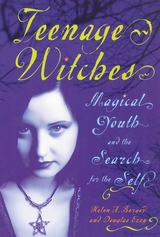
Yet, as Helen A. Berger and Douglas Ezzy show in this in-depth look into the lives of teenage Witches, the reality of their practices, beliefs, values, and motivations is very different from the sensational depictions we see in popular culture. Drawing on extensive research across three countries--the United States, England, and Australia--and interviews with young people from diverse backgrounds, what they find are highly spiritual and self-reflective young men and women attempting to make sense of a postmodern world via a religion that celebrates the earth and emphasizes self-development.
The authors trace the development of Neo-Paganism (an umbrella term used to distinguish earth-based religions from the pagan religions of ancient cultures) from its start in England during the 1940s, through its growing popularity in the decades that followed, up through its contemporary presence on the Internet. Though dispersed and disorganized, Neo-Pagan communities, virtual and real, are shown to be an important part of religious identity particularly for those seeking affirmation during the difficult years between childhood and adulthood.

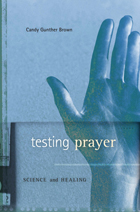
When sickness strikes, people around the world pray for healing. Many of the faithful claim that prayer has cured them of blindness, deafness, and metastasized cancers, and some believe they have been resurrected from the dead. Can, and should, science test such claims? A number of scientists say no, concerned that empirical studies of prayer will be misused to advance religious agendas. And some religious practitioners agree with this restraint, worrying that scientific testing could undermine faith.
In Candy Gunther Brown’s view, science cannot prove prayer’s healing power, but what scientists can and should do is study prayer’s measurable effects on health. If prayer produces benefits, even indirectly (and findings suggest that it does), then more careful attention to prayer practices could impact global health, particularly in places without access to conventional medicine.
Drawing on data from Pentecostal and Charismatic Christians, Brown reverses a number of stereotypes about believers in faith-healing. Among them is the idea that poorer, less educated people are more likely to believe in the healing power of prayer and therefore less likely to see doctors. Brown finds instead that people across socioeconomic backgrounds use prayer alongside conventional medicine rather than as a substitute. Dissecting medical records from before and after prayer, surveys of prayer recipients, prospective clinical trials, and multiyear follow-up observations and interviews, she shows that the widespread perception of prayer’s healing power has demonstrable social effects, and that in some cases those effects produce improvements in health that can be scientifically verified.

Classic astrology.
The Tetrabiblos of the famous astronomer and geographer Claudius Ptolemaeus (ca. AD 100–178) of Egypt consists of four books, the title given in some manuscripts meaning “Mathematical Treatise in Four Books,” in others “The Prognostics addressed to Syrus.” The subject is astrology, which in Ptolemy’s time as down to the Renaissance was fused as a respectable science with astronomy. Translations and commentaries are few, and only three Greek texts had been printed (all in the 16th century) before the present one and the one begun by F. Boll and finished by Emilie Boer in 1940.
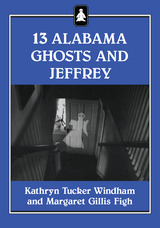
Jeffrey is the mischievous "something" that has headquarters in the Windham home in Selma, Alabama. He first made his presence known in October 1966, and since then he has continued, at irregular and infrequent intervals, to clump down the hall, slam doors, rock in a chair, frighten the family cat (now deceased, through no fault of Jeffrey), move heavy pieces of furniture, cause electronic equipment to malfunction, and hide objects. He frequently accompanies Mrs. Windham on her travels, and tales of Jeffrey's antics are widely recounted.
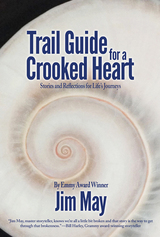
"A brilliant mixture of story, philosophy, humor and wisdom, this book reminds us that---if we are open to story, dreams, imagination, and myth---we can open doors within our soul."
—Jay O’Callahan, author, storyteller, and NPR commentator
A lifetime collection of stories, wise words, assembled musings and quotations about overcoming hurdles, elusive enlightenment, personal evolution, persistence in the face of discouragement, this pastiche is designed to encourage the downhearted, lift up the strivers, and add wings to the heels of spiritual seekers.
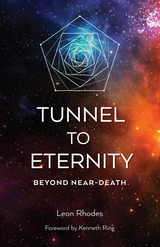
From the experience of dying to awakening to tunnels, bright lights, unfamiliar realms, life reviews, and different levels of consciousness, Leon Rhodes takes the reader on a great adventure into the unknown. An officer in the International Association for Near-Death Studies (IANDS), Rhodes recounts the stories of near-death experiences (NDEs) that people have shared with him over the years. The profound changes in their lives after their discoveries are chronicled as a source of inspiration.
In addition, the fascinating parallels between NDEs and the spiritual world, described over two hundred years ago by Emanuel Swedenborg, provide many insights into the transition from this life to the next world. Rhodes' unique Swedenborgian perspective broadens the discussion over the significance of the near-death phenomenon.
READERS
Browse our collection.
PUBLISHERS
See BiblioVault's publisher services.
STUDENT SERVICES
Files for college accessibility offices.
UChicago Accessibility Resources
home | accessibility | search | about | contact us
BiblioVault ® 2001 - 2024
The University of Chicago Press









